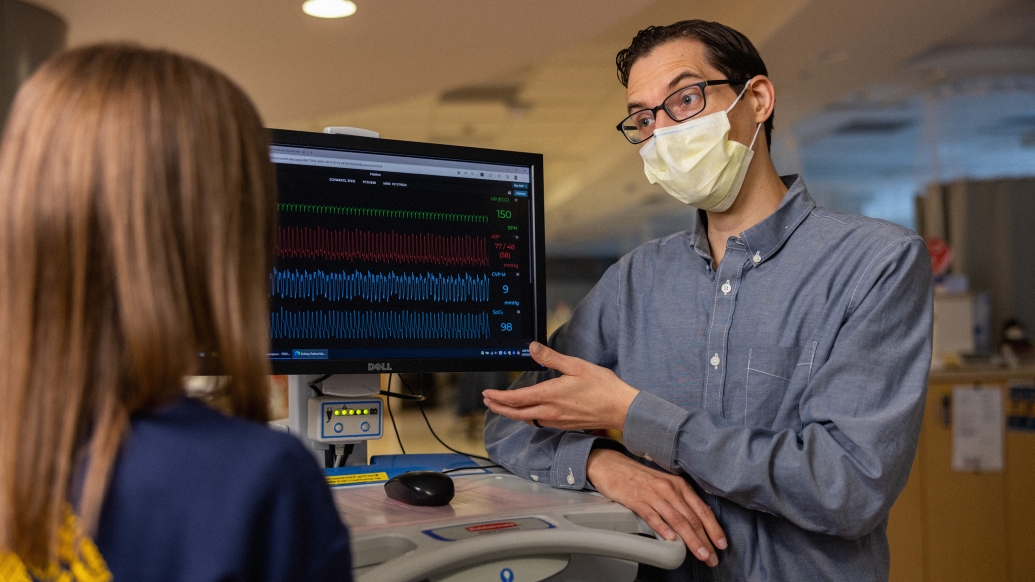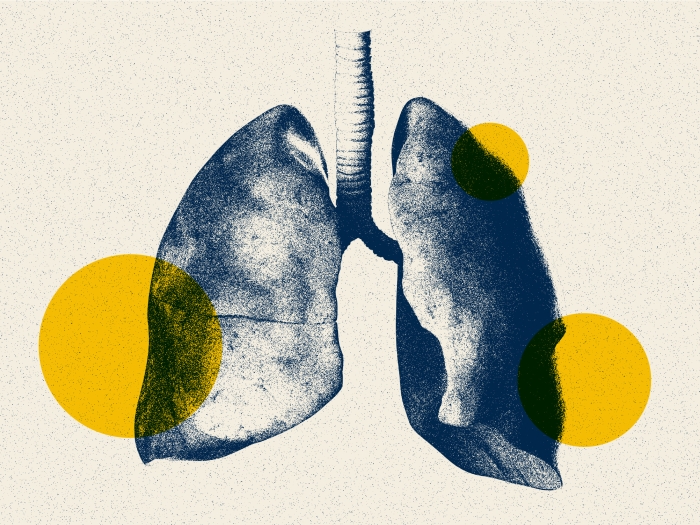The project allows care team members to access data from cardiac monitors and all connected bedside devices on workstations, PCs, phones and tablets
5:00 AM
Author |

“It’s a real game changer.”
That’s how Steve Kronick, M.D., the Adult Emergency Services chief in emergency medicine, described the Mobile Monitoring Transformation Project, supported by the Sickbay™ Clinical Platform.
The streaming telemetry technology allows care team members to access data from cardiac monitors and all connected bedside devices on workstations, PCs, phones and tablets.
“Monitoring patients from your desktop significantly improves the ability to track patients in the ED,” Kronick said. “The additional tools allowing review and capture of dysrhythmias will greatly enhance care and communication about patients in both real-time and longitudinally.”
Michigan Medicine began rolling out the new technology as a pilot late last year. It's currently situated n the adult and pediatric ICUs and EDs, and a dozen of other areas.
Enhancing collaboration, care
The new web-based technology will transform bedside care and greatly enhance collaboration among care team members. The Sickbay platform will reduce manual workload and support U-M Health’s BASE strategic priorities by improving access to care, patient safety and quality of care, and by enriching the patient and employee experience.
Its key benefits include:
- Access to real-time waveform data beyond the bedside and nurse’s station or remote monitors on the unit.
- Meaningful dashboards with real-time and trend data to support root cause analysis and care collaboration among team members
- Timely information that helps prevent delays in care and reduces risk to patients
- Ability to look at trends for clinical rounds
- Potential to see early signs of deterioration by looking at timed vital sign trends
- Increased efficiency and reduced work tasks through elimination of manual ECG strip charting (planned for the July/August timeframe)
- Easy one-click access to patients’ lab results
Although the roll out only recently begun, Daniel Ehrmann, an assistant professor of pediatric cardiology, has already seen how useful the technology can be when monitoring his complex cases.
“The technology dramatically improves our remote monitoring capabilities in the pediatric cardiothoracic intensive care unit, where patients can deteriorate quickly,” he said.
“By being able to continuously observe bedside data, we can augment our second-by-second situational awareness of the sickest patients in the unit. We have an excellent relationship with the vendor and are working together diligently to maximize the value of the product for patients, providers, researchers and our larger health system enterprise.”
Nurses and technicians appreciate the ability to pull up patient data in the ED and watch patient vitals before they get admitted to the unit, as well as the ability to monitor multiple patients on the same screen from one office or station.
They also note how easy it is to protect all patient health information from being displayed on the screen.
A larger rollout
The rollout will continue with all remaining inpatient beds receiving the technology by June 2024. As the program expands, the project team expects to work closely with Sickbay, the vendor, to modify and adjust the application to respond to feedback from care teams.
“Sickbay is a highly configurable and flexible tool, and it is also one which we feel could still be improved,” said chief medical information officer Ranjit Aiyagari, M.D., FACC, who serves as the executive sponsor of the project.
“The vendor has been very receptive to making modifications and adjustments in response to our feedback. Sickbay can be accessed through multiple routes, including via our mobile Unified Communications smartphones and by users taking calls from home or off-site locations.”

Explore a variety of health care news & stories by visiting the Health Lab home page for more articles.

Department of Communication at Michigan Medicine
Want top health & research news weekly? Sign up for Health Lab’s newsletters today!





